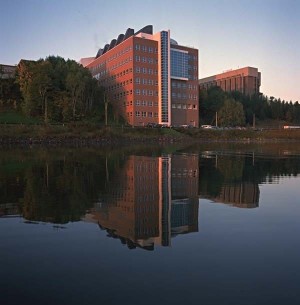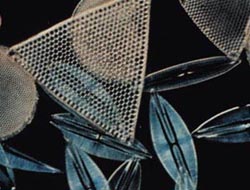Michael
R. Gretz, Professor
Biotechnology
Research Center
Department of Biological
Sciences
Dow
Environmental Sciences and Engineering Building, Rm. 730
Michigan Technological
University
1400 Townsend
Drive
Houghton, Michigan
49931
Phone: (906)
487-3175
Fax: (906)
487-3167
email: mrgretz@mtu.edu
 |
*This work is funded in part
by the National Science Foundation. In keeping with NSF
policy, we note that "any opinions, findings, and conclusions or
recommendations expressed in this material are those of the author(s)
and do not necessarily reflect the views of the National Science
Foundation."
|
 |
|
Research
Interests
Our work
is centered on the cell wall and associated extracellular polymers of
algae.
We are interested in what these algal extracellular matrices can tell
us about: 1) the evolution of the land plant cell wall, 2) the unique
characteristics that allow for life in aquatic habitats, 3)
the
interactions within complex biofilms, including the heterotropic
utilization
of complex macromolecules, and 4) the biomineralization processes (ex.
silica and calcium carbonate) associated with these extracellular
polymers.
What
is
the broader significance of our work? The characteristics of
plant cell walls
determine the properties of innumerable products we consume every
day. Our work has potential impact on the pulping properties of wood,
the mechanical properties of textile fibers, the health effects of
dietary fiber, the efficiency of energy extraction from biofuels,
among others. In aquatic ecosystems, algal extracellular
polymers
play a pivotal role in maintaining the integrity of biofilms. These
biofilm consortia have high primary productivity and play a crucial
role in many processes including regulating nutrient fluxes between
terrestrial and aquatic ecosystems, flood mitigation, storm
abatement, reduction of sediment from the water column, ground water
recharge/purification, and maintaining stability of intertidal
mudflats.
Our
current projects our outlined below:
The charophycean green algae
(CGA)
are
the closest algal relatives to the land plants and
exhibit many of
the same cell wall characters, suggesting that many of the key
morphogenetic events and associated cell wall polymers found
in
modern land plants arose in their ancestors before emergence onto land
approximately 470 million years ago. Our lab is part of an
international team of researchers attempting to understand the
functions of CGA wall characters critical to the success of land
plants, and determine the evolutionary sequence that led to this
result.
In
our quest to discover the key cell wall components necessary
for adaptation to land, we have recently reached
beyond the algae to a
model moss system Physcomitrella patens. Our
collaborators have knock-in transformants with several cellulose synthase-like genes
expressed.
We are evaluating the effects of these additions on cell wall
characters in hopes of further defining the functions of CslB, E G and
H.
One
of our favorite groups of algae, the diatoms, have provided unique
insights into the involvement of extracellular polymers in nano-patterning of silica (window
glass) by these unique single celled organisms.
Diatoms
are abundant in complex biofilms
that are critical components of both marine and freshwater systems. Our
studies of Everglades and Colne Estuary, UK,
diatom doninated biofilms
have yielded critical insights into the physiological ecology of
freshwater periphyton and metaphyton and intiertidal mudflat
biofilms.
The
"diatom gone wild" Didymosphenia geminata
(Didymo)
is unique in that, in this organism, a switch for exo-polymer
production has been turned on with the result that thick (up to 30 cm)
mats of diatom extracellular polymer "rock snot" covers vast reaches
(kilometers) of streams worldwide.
|

